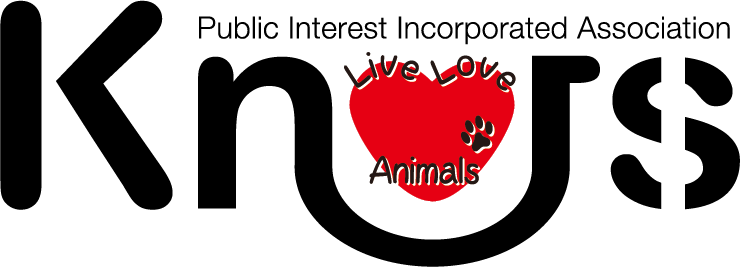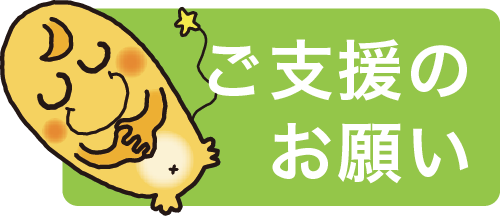Mr.Toshizo IDO,
Governor of Hyogo Prefecture, |
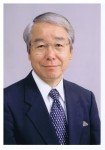 |
| The 2nd Live Love Animals International Conference on Animal Care in Kobe 2012 is being held on an impressive scale. While extending my heartfelt congratulations on the hosting of this event, I would like to extend a warm welcome to Hyogo and Kobe to all the participants who have gathered here from across Japan and around the world.
The 21st century will prove to be an age of coexistence. People can live lives that are safer and more secure if their society is one in which every living thing is valued. I believe that interacting and building better relationships with the animals that are close to us is the first step towards achieving this goal.
The Great Hanshin-Awaji Earthquake that devastated this region 17 years ago also claimed a great many animal victims. Four days after the earthquake struck, an Animal Rescue Headquarters was started up centered on the Veterinary Associations of Hyogo Prefecture and Kobe City, and the Japan Animal Welfare Society (JAWS). They carried out rescue activities with the support of a large number of volunteers gathered from all over the country. As a result, over 1,500 dogs and cats were given shelter and protection, and the great majority of these animals were later returned to their original owners or adopted by new owners. These animals brought emotional and psychological relief to many people, giving them encouragement and helping them move on with the tasks of rehabilitation and reconstruction.
Based on experience gained from that time, Hyogo has provided active support to the animal rescue activities conducted in Tohoku following the Great East Japan Earthquake of March last year. We sent out a total of over 200 animal welfare specialists to provide help taking care of pets while their owners, who had been forced to move from the evacuation zone surrounding the Fukushima Daiichi nuclear power plant, made brief visits home. They also helped in the work to rescue animals wandering inside the zone.
Moreover, as a basis for securing animal welfare, they established an Animal Rescue Center with branches in four locations around Fukushima Prefecture. Their task was not only to look after dogs and cats without owners, but also to search for new owners for these animals, run training classes and ‘interaction with animals’ classes, etc. In addition, Hyogo is placing a strong emphasis on building regions where people and nature can coexist in harmony. For example, our Prefecture is proceeding with an overall regional effort to reintroduce storks into the wild, an effort centered on the Toyooka Basin.
In this regard it is extremely encouraging that, at this conference here today, so much expertise centered on veterinarians has been gathered from countries all over the world. This will enable discussions to be held that relate to animal care from a wide variety of angles. It is my hope that we can help widen the circle of people who are aiming to create a society in which people can coexist with animals and nature and that we can work together for its realization.
I would like to end by extending my sincere hopes that this conference will be successful. I also wish all the participants continued good health and further success in their various activities.

|
Mr.Tatsuo YADA,
Mayor, Kobe City |
 |
| I extend my heartfelt congratulations on the hosting in Kobe, once again, of the 2nd Live Love Animals International Conference on Animal Care and I would like to welcome all of you who are attending from across Japan and beyond.
The damage caused by the Great East Japan Earthquake that struck in March of last year was on an unprecedented scale. In response to the disaster, Kobe City has been providing support to help with the recovery efforts and reconstruction of the disaster area based on implementing the expertise gained and lessons learned from the 1995 Great Hanshin-Awaji Earthquake in Kobe. Having experienced such a disaster and post-quake recovery in our own recent past, we are committed to continue support efforts in the future. Kobe is uniquely placed to provide this in ways that connect people’s hearts and minds with the disaster area.
In the wake of the Great Hanshin-Awaji Earthquake and in an effort to rescue pets and their owners, a group centered on veterinary associations and animal welfare organizations set up the ‘Great Hanshin Earthquake Animal Rescue Headquarters’. This group expanded its animal rescue activities despite the personal losses and suffering of many of its own members. In addition, through the extraordinarily devoted cooperation of volunteers and warm support from numerous other people, their efforts saved the lives of many animals and encouraged so many disaster victims. These ties, created between people and people and between people and animals, were subsequently handed down in a dog transfer project – an initiative carried out in collaboration between Kobe City Animal Control Center and volunteer groups.
Based on guidelines established by the Ministry of the Environment, Kobe City is currently promoting measures to further reduce the number of cats and dogs destroyed each year and to heighten public awareness about the correct ways to keep cats and dogs. These measures are part of our efforts towards realizing a city where people and animals can live in harmony together. In this regard it is highly significant that we are holding an international conference that will deepen discussions about the Great East Japan Earthquake experience and animal health management, etc., with the aim of promoting health and happiness for both people and animals. It is my sincere hope that the information shared will be disseminated far and wide, all around the world.
Lastly, I would like to express my deep respect and appreciation for the many people who have joined together to make this event possible. I sincerely wish the greatest of success for the conference and the good health and active participation of all those attending.

|
|
Dr. Yoshihisa YAMANE,
President, Japan Veterinary Medical Association (JVMA)

International Conference on Animal Care in Kobe (ICAC) |
 |
| The International Conference on Animal Care in Kobe was first held in 2009, on the eve of the 15th anniversary of the Great Hanshin-Awaji (Kobe) Earthquake. The event was started by PIIA Knots (in its earlier NPO form) as an opportunity for society to reflect on our ‘responsibility for life’- something that was acutely apparent from the earthquake experience – and as an opportunity to disseminate related information.
The 2nd ICAC has been prepared under the theme ‘Medical Treatment and Health Care – for the Future of People and Other Animals’ which aims to address more specific topics than the first conference, as necessitated by the Great East Japan Earthquake which hit the Tohoku Region of our country.
The scenes of destruction shown on television were incredible. The catastrophic disaster has left the towns in a shambles. However we have all gained courage from the extraordinary determination of the victims to recover and the huge volume of support that came from so many people both within and outside Japan. Veterinarians in the damaged areas have put the rescue of animals before protecting their own livelihood, supported by the goodwill of many others and with the cooperation of our Japan Veterinary Medical Association and the local authorities. The rescue structures put in place at the time are still in operation.
It is therefore highly appropriate for the Japan Veterinary Medical Association, as an organization of animal specialists and scientists, to include its name as an official organizing body for this conference, and to introduce our own background, expertise, and specialized policy regarding ‘responsibility for life’. The forms of medical treatment provided by veterinarians to animals are varied. The animals themselves are multiple in their forms and function, ranging from smaller birds, cats and dogs to larger horses, cows, or even whales. We always need to be mindful of their differing relationship with humans, and why we care for them.
This time the Japan Veterinary Medical Association will be focusing on the variety of medical treatment provided to animals and offer insights to a more general audience.
We thereby hope that this conference will expand people’s understanding about the diversity of veterinarian work and the medical care provided to animals.
|
|
Mr.Ryuichi YOKOYAMA,
Director, Hyogo Veterinary Medical Association

|
 |
| I would like to express my congratulations on the holding of the 2nd International Conference on Animal Care in Kobe.
March 11th 2011 was a terrifying day for Japan. The overwhelming power of Mother Nature acutely reminded us that we are all but a part of nature. However, even though human lives within our society may only be one segment in the circle of life, there is no disputing that human life must come first.
The tsunami also caused an extensive loss of livelihoods over a wide area. In addition there are the areas to which entry is now restricted due to the radiation contamination following the nuclear reactor accident. Without doubt, the urgency of each situation demanded the rescue of human life as the highest priority. However, we must not forget the animals left behind, both livestock and pets, which were left to die of hunger. Yes, human lives are precious but the value of other life should be no different. However, the reality is not so simple and we find ourselves tasked with finding the answer to a difficult question.
The Hyogo Veterinary Medical Association has been considering the role it should play during disasters based on our experience of the Great Hanshin- Awaji Earthquake. While we have felt that the measures which our association took during the aftermath of that earthquake were inadequate, since March 11 we have realized that the very fundamentals themselves need to be reconsidered. Nevertheless, our Hyogo Veterinary Medical Association is committed to preparations for facing large-scale disasters and, while we must continue to pay heed to the present situation, post March 11th, we must be prepared for the much-forecast Tokai/Tonankai/Nankai Earthquake, an event expected to occur sometime in the near future. So we ask for your support and understanding as we prepare for the tasks ahead of us.
Finally, it is my sincerest hope that this conference will be a great success through your whole-hearted and active participation. |
Mr.Katsumoto NAKAJIMA,
Chairman,Veterinary Association of Kobe City
 |
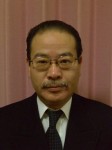 |
| I offer my congratulations for the holding of the 2nd Live Love Animals International Conference on Animal Care in Kobe 2012. To mark this occasion, I would like to contribute the following message.
As we are all aware, Kobe City suffered catastrophic damage as a result of the 1995 Great Hanshin-Awaji Earthquake. Furthermore, because the epicenter of the quake was very close to a central urban area, the scale of the resulting damage was the largest of any earthquake in Japan since the Great Kanto Earthquake of 1923. And if we consider Kobe alone, the disaster was unprecedented in the previous 500 years. In the years since 1995, the people in Kobe who were affected by the disaster have undertaken a wide variety of reconstruction projects under catchphrases such as “reconstruct as soon as possible”, “safe and sound urban development”. Following the earthquake, the Japanese government declared 1995 “the Year of the Volunteer” and several previously unremarkable words, such as “kizuna” (bonds or ties), “light of hope”, etc., became deeply engraved in the hearts of both disaster victims and people working as volunteers.
The Great East Japan Earthquake, which struck on March 11, 2011, registering as the fourth largest earthquake ever recorded worldwide, and the consequent Fukushima Daiichi Nuclear Power Plant accident have added up to an unprecedented disaster for Japan in terms of both the extent and the scale of the destruction. In addition this country, which suffered radioactive contamination from the atomic bombs of the Second World War, is now once again contaminated by radioactive fallout due to the nuclear accident.
Although in Kobe we are geographically distant from the present disaster area, we are swayed by a deep sorrow and concern for the victims. Naturally we acutely feel obligated to extend any kind of support we can to the extensive area affected by this large-scale natural disaster. After the Great Hanshin-Awaji Earthquake, Kobe received a huge amount of support from people across the nation. As a small gesture of reciprocation for that support, I myself visited the disaster area in April, after Sendai Airport was tentatively reopened. While there, I carried out an investigation by talking to victims of the disaster. In particular, I researched the support system for animals, and sent requests to the relevant authorities such as the Emergency Animal Rescue Headquarters.
On that occasion, the response from local governments to our requests to set up an Animal Rescue Support Center was not very enthusiastic. Every priority was being given to measures to help the human victims of the disaster. However, from our viewpoint as having experienced the Great Hanshin-Awaji Earthquake, we knew that carrying out support activities for animals affected by the disaster, (such as temporarily keeping them or looking for foster owners), would serve to aid many disaster victims in their own efforts to recover. As such, these activities are important for helping those affected by the disaster to shed their “disaster victim mentality” and move from a state of being mired in sorrow to one of rising toward recovery.
“Kizuna” was chosen as a defining word of 2011. I believe that this “kizuna” is something that can rescue people from the “disaster victim mentality” that naturally afflicts so many of those who survive through the disaster itself. In this context, I consider ties between people and animals to be an extremely important thing that has much in common with ties between people and people.
|
|
Mr.Minao Murabayashi,President,
Nestlé Japan Limited Nestlé Purina PetCare

|
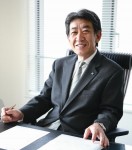
|
| Nestlé Purina PetCare has adopted as its corporate vision the slogan “Your Pet, Our Passion.” We think of pets as being members of the family, and just as with people, we want pets to live long and healthy lives.
Taking care of our pets’ health and having close communication with them also leads to our own better mental well-being as responsible care-givers. In addition, our pets themselves provide us with a great deal of mental support. People begin to enjoy richer lives when they live together with pets. At Nestlé, we want to continue to support pet health and the happy living of pets with their owners.
Nestlé is continuing to develop products tailored to cater to the current pet-oriented environmental trends of miniaturization, extended longevity, obesity and indoor-keeping based on the themes of wellness, high nutrition and health.
At our research facilities, where we keep many cats and dogs, our staff of researchers, veterinarians, ethologists, nutritionists and other professionals are continuously studying and monitoring pet foods and their influence on pet health as well as on nutrient conditions, taste preferences, etc. These efforts aim to develop even higher quality and more highly functional pet foods.
Motivated by the Great Hanshin-Awaji Earthquake (Kobe, 1995), the NPO organization ‘Knots’ began its activities aimed at disseminating throughout society the strong ties between people and animals, the huge influence of these ties, and the importance of people and animals coexisting in harmony. Moved by this effort, Nestlé Purina PetCare has been supporting Knots since its early days.
At the International Conference on Animal Care in Kobe 2009, during the Workshop on Nutritional Science for Pet Animals, in addition to discussing the continuing spread of the modern pet “disease” of obesity, one of our nutritionists lectured on the relationship between intestinal health and immune function in pet animals.
The social contribution made by Knots through its various activities is widely recognized, and in 2010 the organization was re-established as a general incorporated association under the name of PIIA (Public Interest Incorporated Association) Knots.
When the unprecedentedly huge disaster struck Japan’s Tohoku Region on March 11, 2011, Knots quickly started up activities aimed at providing support for affected pet owners by launching the “Zutto Issho ni Iyoyo” (Always be Together) Project making use of the experience gained in carrying out animal rescue operations after the Great Hanshin-Awaji Earthquake 16 years previously.
From behind the scenes, Nestlé Purina PetCare would like to continue giving Knots even more support in future.
|
|
Osaka Prefecture University
The 2nd International Conference on Animal Care (ICAC) in Kobe 2012 |
|
A Congratulatory Message to the 2nd International Conference on Animal Care in Kobe 2012
Department of Veterinary Science, Osaka Prefecture UniversityI would like to offer my sincere congratulations on the organization of the 2nd International Conference on Animal Care 2012 held in Kobe, the city devastated by the Great Hanshin-Awaji Earthquake seventeen years ago, but recovered from it due to the support of a great number of people and their wisdom.
Ten months have already passed since the Great East Japan Earthquake in March 2011. However, in the face of this unprecedented disaster, relevant authorities are still in chaos, and a large number of people and animals are struggling to survive harsh weather conditions and nuclear radiation. Osaka Prefectural University dispatched teaching and other staff and student volunteers to the disaster-stricken areas to help accelerate reconstruction. I pray that the disaster victims, including animals, can return to their normal lives as soon as possible.
The Department of Veterinary Science of Osaka Prefectural University, located on the Rinku campus on the opposite shore of Kansai International Airport, is committed to nurturing specialists with international perspectives as well as expertise in veterinary medicine and science, who address a variety of challenging problems related to the living environment of people and animals with creative ideas and flexible thinking. As a public university, the school publishes its new research findings to be shared in the community.
As knowledge and wisdom from various fields are required to create an environment in which people live in harmony with animals, many different academic disciplines should cooperate with each other across boundaries. It is important that the international conference provides an opportunity for specialists of the world involved in the creation of a symbiotic environment to gather to share information on a continuing basis. The Department of Veterinary Science is determined to contribute to the success of the conference. We pray for the continued success of the international conference and an improvement in mutual friendship between people and animals.
|
|
Mr.Yoshio Koshimura, Chairman,
Japan Pet Food Association

The 2nd International Conference on Animal Care (ICAC) in Kobe 2012 |
 |
| I would like to offer my sincere congratulations on the holding of the 2nd International Conference on Animal Care in Kobe 2012. I pray, from the bottom of my heart, for its success and for a great outcome for the main organizers, the Japan Veterinary Medical Association and PIIA Knots.
This year, the Act on Welfare and Management of Animals is to be revised. While, for people, we were able to accurately specify the numbers killed or missing after last year’s Great East Japan Earthquake and related events, unfortunately nobody could accurately assess the number of animals that suffered. In order to promote true animal welfare and happier lives for humans with animals we believe that we should create a family register system for animals, especially companion animals (dogs, cats, rabbits and horses). I truly believe that such a registration system will surely reduce the need to euthanize animals if people know that they should report to an authority when they start living with an animal or when that animal dies. Such a system would thereby increase people’s sense of responsibility that they must take care of an animal for the duration of that animals’ life.
We at the Japan Pet Food Association (JPFA) updated our posters and brochures entitled “A Great Many Smiles, Happy Living with Pets” in August 2011. These brochures include not only dogs and cats, but also birds, small animals, fish and other such ornamental creatures. The JPFA has been disseminating a message to the public that “pets bring mental and physical health to human beings,” by distributing these brochures at various events including the international pet fair, “interpets,” which JPFA sponsored last August. JPFA has also published an official textbook for the “Pet Food / Pet Manners Qualification Exam” which launched in November last year. This textbook introduces not only “the basic knowledge of pet foods,” but also information about “how to interact with animals” and “how animals contribute to people’s mental and physical health”, so that people assume more responsibility when living with animals.
On the other hand, JPFA has donated pet food, for example, to support pet victims following the Great Hanshin-Awaji Earthquake and Great East Japan Earthquake disasters. In relation to the latter, the JPFA has continued with pet food donations to an amount of 296 tons which is equivalent to an annual supply for over 13,000 pets. The donations have been made through the Headquarters for the Relief of Animals in Emergencies with support from our member companies. The JPFA has also supported the animals by donating relief money collected during the “interpets” fair held last August. JPFA’s member companies have also been contributing large sums of money for caring for the animals.
JPFA will continue to carry out activities that are in alignment with the purpose of this International Conference which itself aims a brighter future for both humans and animals. The JPFA will also support this Conference.
We at the Japan Pet Food Association sincerely hope that the idea of mutually happier lives of humans with pets will be more broadly accepted by the public through this 2nd International Conference on Animal Care in Kobe. |

![]()

